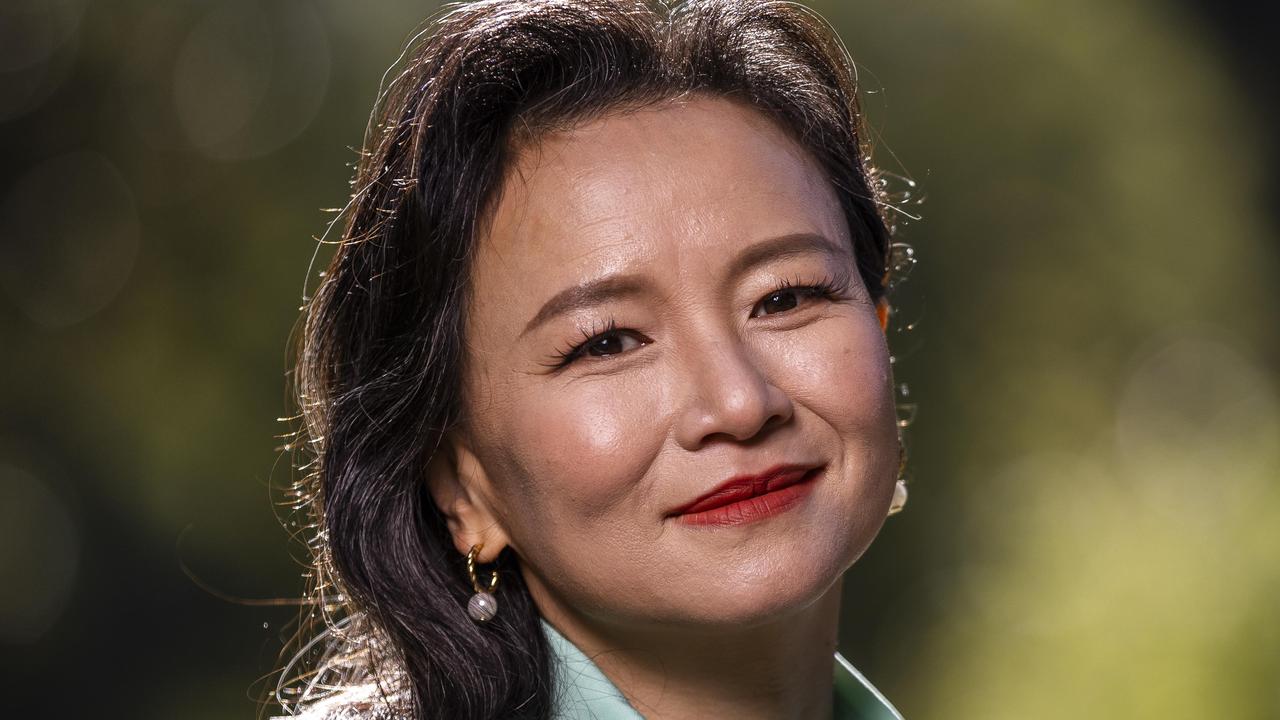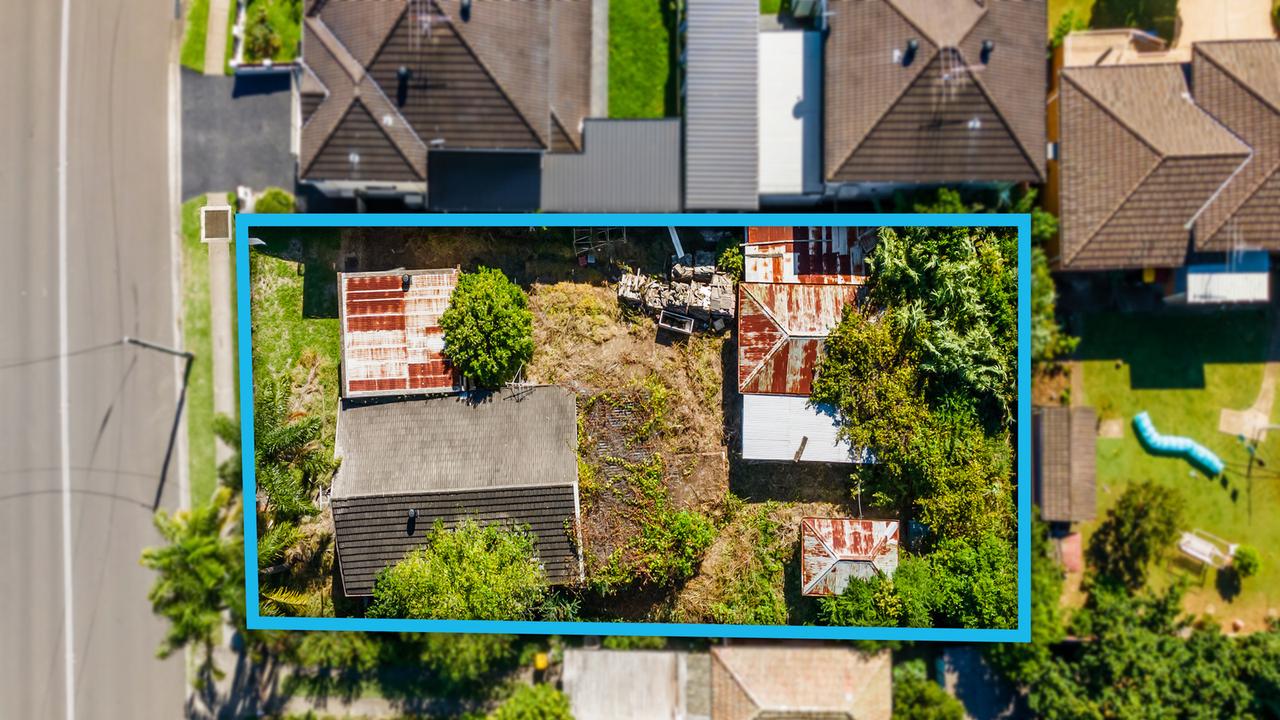Medical breakthrough saving the lives of premature babies
Kept apart for 27 days after birth, the moment premature twins Olivia and Zoe were reunited was magic.
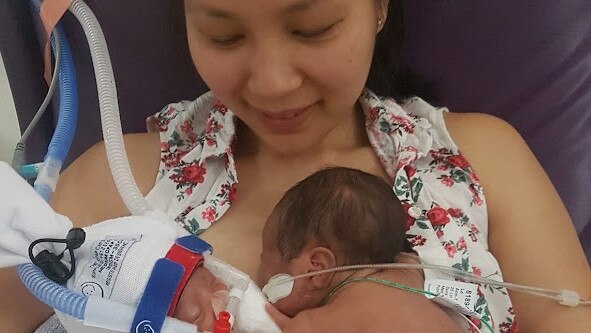
National
Don't miss out on the headlines from National. Followed categories will be added to My News.
Exclusive: They are the miracle twins who – on paper – should not be here.
Born at just 28 weeks, Olivia and Zoe barley tipped the scales at one kilogram.
But a life saving new method of delivering oxygen kept them alive and now could help other premature babies.
“If my girls were born in the 90s I’m not sure they would have made it,” their mother Ann Le.
Australian doctors carry out 3500 high risk procedures each year to put premature and sick babies on ventilators to support their breathing.
“Success rates at the first attempt are pretty low,” said neonatal intensive care specialist Dr Kate Hodgson from Melbourne’s Royal Women’s Hospital.
To improve outcomes doctors at Melbourne’s Royal Women’s Hospital trialled a method of breathing support used in adults.
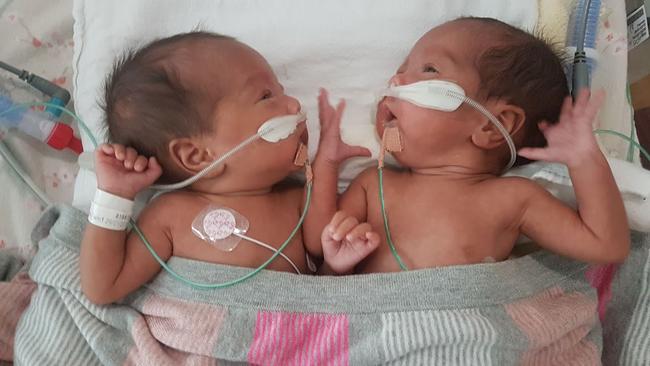
They delivered high flow heated, humidified oxygen to the babies through a small prong in their nose while they inserted the breathing tubes.
The new method saw their oxygen levels stay within a normal range for longer and that meant babies were more stable.
The stunning results of the SHINE trial published in the New England Journal of Medicine on Thursday saw first time success rates for the procedure improve from 31.5 per cent to 50 per cent in the group using high flow oxygen.
Zoe and Olivia were two of more than 200 babies who took part in the clinical trial.
They are rare monochorionic-monoamniotic (MoMo) twins who developed in a single amniotic sac and shared a placenta making their survival more high risk.
Six weeks after birth they required heart surgery to close an extra hole that caused backflow of blood into the heart and this allowed them to breathe better and pump blood more efficiently.
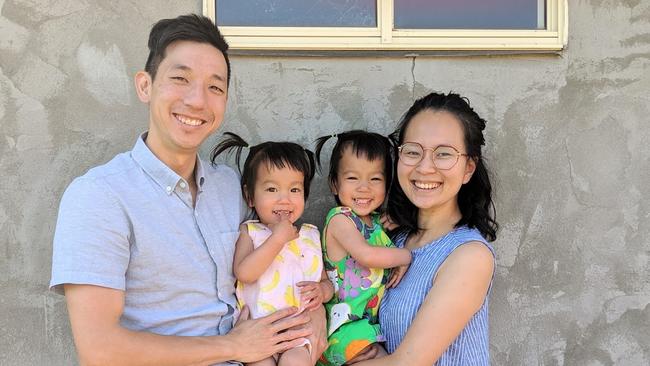
“Seeing your baby or your babies go through something like (being put on a ventilator) that can be quite traumatic for the parents so if it can be done quicker and more successfully, then I think it’s great,” Ms Le, who works as a physiotherapist at the Royal Children’s Hospital in Melbourne, said.
The babies were kept apart for the first 27 days after they were born because they needed high levels of support but their reunion was a magic moment for their parents and hospital staff.
“That moment Zoe was put on my chest she immediately reached out her hand and hugged her older sister, which was kind of incredible,” Ms Le said.
“It’s called the rescue hug, one twin kind of supports the other. And in that case, it was Zoe who was considered the slightly stronger twin. She was hugging her older sister who was not doing as well at the time. And so that was really, really nice.”
The twins are now aged three and love “pulling things out of drawers”.
“They like drawing, they love books, they recently got into Lego, love building things and they absolutely love singing songs on repetition,” Ms Le said.




